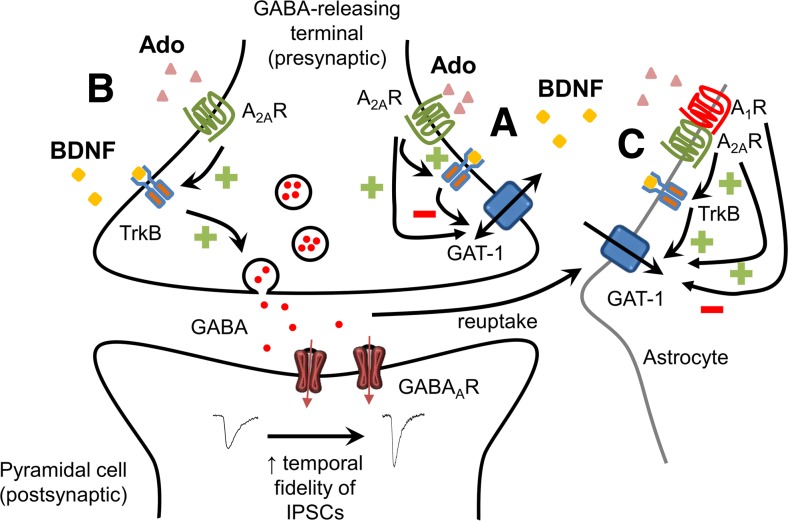Fig. 7.
Summary of the influence of BDNF over GABAergic transmission and its control by adenosine A2ARs. BDNF inhibits GAT-1-mediated non-exocytotic GABA release [9] and inhibits neuronal GABA reuptake [18] (A); A2ARs facilitate BDNF actions [18, 19]. In addition, BDNF facilitates exocytotic GABA release (B) (present work) and astrocytic GAT-1-mediated uptake of GABA (C) [17]; in both cases, these actions are gated by A2AR. Direct influences of adenosine over hippocampal GABAergic transmission also occur, and some involving A2ARs are depicted in this figure (see [2] for details). Thus, A2ARs also directly facilitate GAT-1-mediated GABA transport into nerve endings (A) [52] as well as facilitate GAT-1- and GAT-3-mediated GABA transport into astrocytes (C), these actions being counteracted by an inhibitory action mediated by A1R which is heteromerized with A2AR at the plasma membrane of the astrocytes (C) [53]. Altogether, these A2AR-dependent actions of BDNF may contribute to increase neuronal excitability without losing temporal fidelity of GABA transmission

